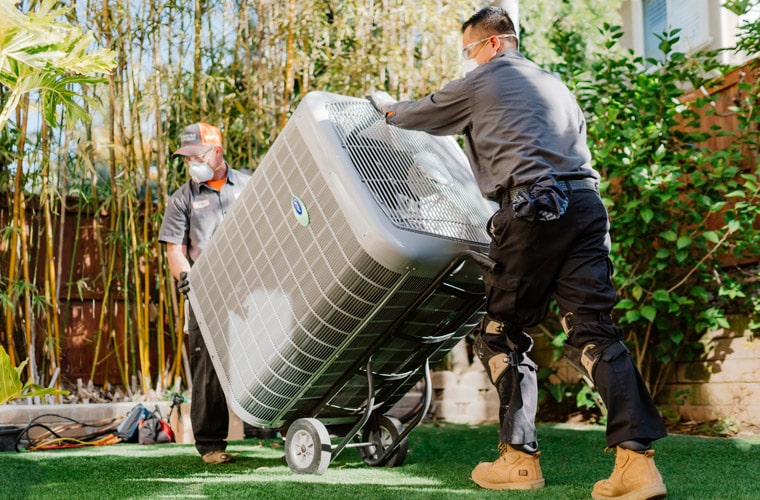According to the United Nations International Children’s Emergency Fund (UNICEF), toilets save lives. Moreover, plumbing systems, which allow for proper sanitation, cuts the risks of diseases. Every dollar spent on sanitation also yields a five-fold return on investment.
All that proves how crucial your house plumbing system is to your health and safety.
However, plumbing defects can also give rise to diseases and costly property damage. For that reason, it’s important you get to know your plumbing system better. By knowing the most common plumbing woes, you can take steps to prevent them from occurring.
To that end, we created this list of the most prevalent plumbing woes many homeowners face. Read on to discover not only what they are but also what you can do to keep them at bay.
1. Leaking Fixtures
About one in 10 US homes waste at least 90 gallons of water in a single day. Together, all residential water leaks waste at least 1 trillion gallons of water a year. All it takes, after all, is one leaky faucet with a leak rate of one drip per second to waste over 3,000 gallons a year.
However, taps are just part of the problem, as showerheads and toilet tanks can leak too. Leaking water heater tanks can also compound the wastage.
Most of those plumbing problems result from worn-out fixture seals. These seals consist of gaskets, washers, and O-rings. These components hold back water and keep it inside water supply pipes.
Faucets themselves can last from 15 to 20 years, but their seals don’t last as long. You may have to replace the seals every few years or so, depending on how heavy you use your taps. However, since your goal is to keep leaks at bay, it’s best to replace them before they actually spring a leak.
You should also regularly check the fasteners that hold fixtures in place. Over time, these nuts, bolts, and screws can come loose, allowing the water to seep out. Simply tighten them with a screwdriver, wrench, or pliers.
2. Leaky Pipes
Water supply pipes can last anywhere from 20 to 70 years. Galvanized steel, for instance, has a lifespan of 20 to 50 years, while brass can last twice as or even longer. Copper can give you up to five decades of useful service.
The thing is, improper installation and high water pressure can cut their life short. Ground movement can also displace pipes, while below-zero temperatures can make them burst. Tree roots can also wrap around underground plumbing pipes.
All those issues can cause hidden pipes to leak and contribute to severe water wastage. Worse, they can cause your home’s indoor humidity to skyrocket. From there, molds, which can proliferate within one to two days, can affect your indoor air quality.
It’s harder to prevent water supply pipe leaks since most of them are out of sight and out of reach. For that reason, it’s a good idea to have your plumbing system inspected at least once a year. Plumbers use thermal and sound detecting machines to check for leaking hidden pipes.
3. Drain Clogs
Clogged drains are often a result of improper sanitation and waste disposal practices. It’s because of this that they’re among the most preventable home plumbing system woes.
For starters, drainage pipes can get clogged due to congealed fats, oils, and grease (FOG). Flushing paper napkins, wipes, diapers, and feminine products worsen the problem. When these things come into contact with each other, they can form a giant clog.
Even if they don’t clog your drain pipes, those wastes can build up in septic systems and sewers. From there, they can keep growing until they reach the size of a fatberg. To give you an idea, one of the biggest fatbergs discovered weighed a staggering 130 tons.
In any case, clogs reduce the efficiency of drain pipes in channeling wastewater out of your home. It may take forever for used water to drain or for a flushed toilet to recede.
Since most drain clogs are due to human activity, the best way to avoid them is by never pouring FOG down your drains. Don’t flush anything else aside from the three Ps (pee, poop, and toilet paper). If you live in an older home, it may also be a good idea to get your drain pipes cleaned at least once a year.
4. Drain Backups
One milliliter of sewage can contain up to one million microorganisms. Many of these are disease-causing bacteria, such as salmonella, E. coli, and shigella. Others are illness-bringing viruses and parasites.
Those microorganisms can end up in your home if wastewater backs up your drains and toilets. This can happen once the clogs in your drain pipes get big enough to cause complete blockage.
Overtaxed and FOG-filled sewers can also send sewage and wastewater back to your home. The same goes for when septic tanks overflow.
Drain backups are less likely to occur if you prevent drain clogs from developing in the first place. Regular septic tank pumping services will also prevent your on-site system from overflowing.
5. Low Water Pressure
Burst or leaking pipes and sediment build-up can cause low water pressure. A leaking water storage tank may also lead to fluctuating pressures.
Sediment build-up, also known as scaling, is typical in homes with hard water. Hard water is water that contains high levels of dissolved calcium and magnesium. About 90% of homes have hard water in the US, so it’s highly possible you get hard water yourself.
Hard water can cause scaling in storage-type water heaters and fixtures. The minerals can also harden within the supply pipes themselves. Since scaling is pretty much a type of clog, it can reduce the pressure of the flowing water.
One option to address all those hard water woes is to install a water softening system. These are available as whole-house systems and individual under-sink versions. Either way, they remove excess minerals in the water to provide you with softer water.
Keep Your House Plumbing System Free of Defects
From leaky pipes to drain clogs and backups, all these are common house plumbing system woes. Fortunately, they’re all preventable, especially the ones that affect drains. Consider softening your water, too, as this can also prolong the life of your pipes and appliances.
Looking for more tips to improve your home and boosts its safety and livability? Check out our recent how-to resources for more informative guides like this!


















